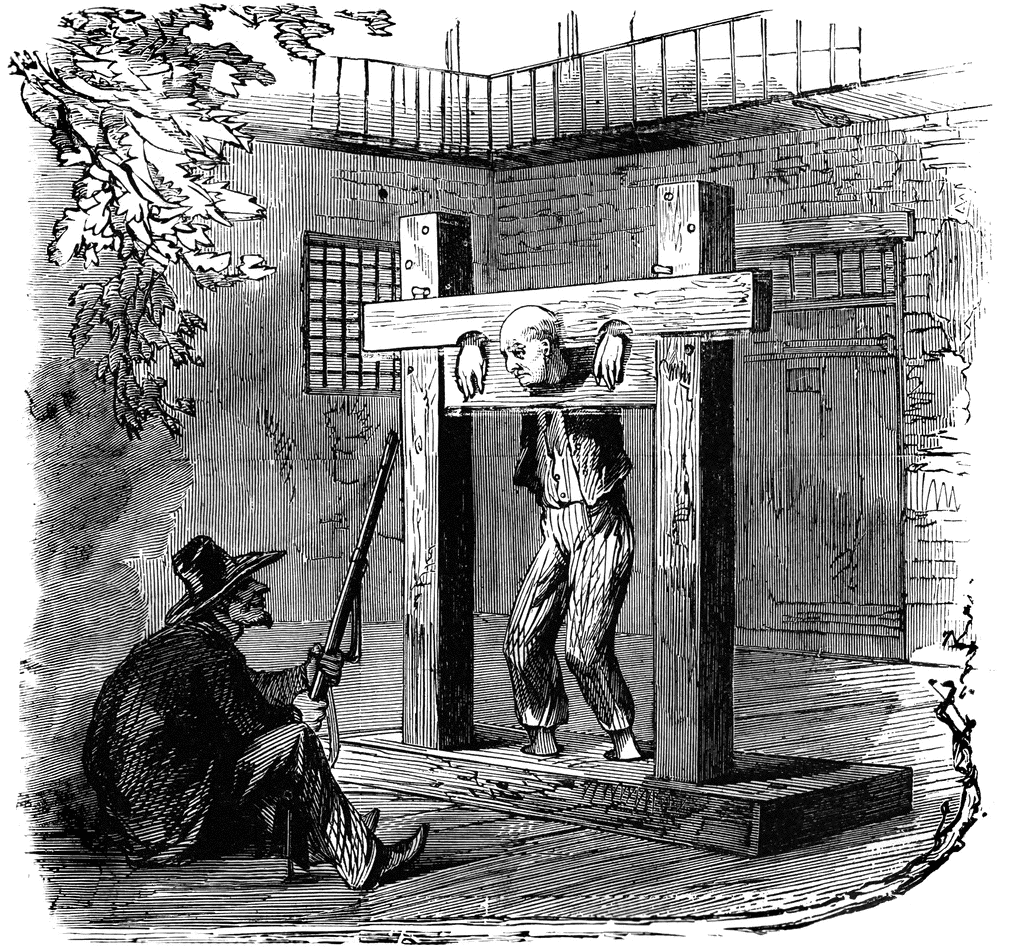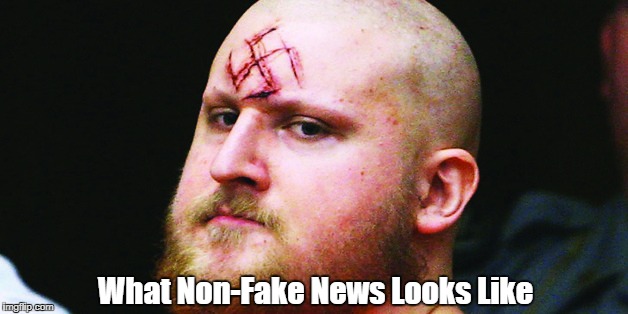Today Oñate is known for the 1599
Acoma Massacre. Following a dispute that led to the death of thirteen Spaniards at the hands of the Ácoma, including Oñate's nephew,
Juan de Zaldívar, Oñate ordered a brutal retaliation against
Acoma Pueblo. The Pueblo was destroyed.
[2] Around 800–1000 Ácoma were killed.
[3]Of the 500 or so survivors, at a trial at
Ohkay Owingeh, Oñate sentenced most to twenty years of forced "personal servitude" and additionally mandated that all men over the age of twenty-five have a foot cut off.
[3] He was eventually banished from New Mexico and exiled from Mexico City for five years, convicted by the Spanish government of using "excessive force" against the
Acoma people.
[2]Today, Oñate remains a controversial figure in New Mexican history: in 1998, the right foot was cut off a statue of the conquistador that stands in
Alcalde, New Mexico, in protest of the massacre, and significant controversy arose when a large equestrian statue of Oñate was erected in
El Paso, Texas, in 2006.
[4][5]On June 15, 2020, the statue of Oñate in
Alcalde, New Mexico, was temporarily removed by
Rio Arriba County workers at the direction of officials. Civic institutions will make the final decision on the statue's future.
[6]Early years
Oñate was born in 1550, at
Zacatecas in
New Spain (colonial
Mexico) to the
Spanish-Basque conquistador and silver baron
Cristóbal de Oñate, a descendant of the noble
house of Haro. Oñate’s mother, Doña Catalina Salazar y de la Cadena,
[7] was also of Spanish origin and a descendant of recent
Sephardic Jewish converts to Catholicism. Some of her close ancestors and other extended family served in the royal court of Spanish monarchs from the late 1300s to the mid-1500s.
[8][9] Two of her Jewish ancestral families had only become
New Christian conversos recently, one in the 1390s, only 160 years before Oñate’s birth, including Doña Catalina’s own grandfather (Oñate’s maternal great-grandfather), Doctor Guadalupe de Salazar, who converted from
Judaism to Christianity and became royal
physician to the
Catholic monarchs, and one of 16 "
regidores" (administrators) of
Granada during the struggle to oust the
Moors. Doctor Guadalupe de Salazar’s son (Oñate’s maternal grandfather), was converso
Gonzalo de Salazar, an aristocrat and leader of several councils that governed New Spain while
Hernán Cortés was traveling to
Honduras, in 1525−26.
The acceptance of
Christianity by Oñate’s maternal Jewish ancestral families was a prominent part of the family history. The descendants of Salazar y de la Cadena‘s Jewish ancestral families, the Maluendas and the Santa María-Cartagenas (formerly the
Ha-Levi family), did not attempt to hide their Jewish origins or pretend to be of “
Old Christian” heritage. In fact, Oñate’s own maternal grandfather, Gonzalo de Salazar, was said to have been open about his Jewish origin. Some of Oñate’s Jewish ancestors probably converted as a result of the
Spanish antisemitism in the 1300s when massacres of Jews began to take place across Spain.
[10]Governship and 1598 New Mexico expedition[edit]
![]()
Texas Historical Marker for Don Juan de Oñate and El Paso del Río Norte
In response to a bid by Juan Bautista de Lomas y Colmenares, and subsequently rejected by the King, in 1595
Philip II's Viceroy
/Luis de Velasco selected Oñate from two other candidates to organize the resources of the newly acquired territory.
[12]The agreement with Viceroy Velasco tasked Oñate with two goals; the better-known aim was to explore and colonize the unknown lands annexed into the New Kingdom of León y Castilla (present day
New Mexico) and the
Viceroyalty of New Spain. His second goal was to capture Capt.
Francisco Leyva de Bonilla (a traitor to the crown known to be in the region) as he already was transporting other criminals. His stated objective otherwise was to spread
Catholicism by establishing new
missions in Nuevo México. Oñate is credited with founding the Province of
Santa Fe de Nuevo México, and was the province's first colonial governor, acting from 1598 to 1610. He held his colonial government at
Ohkay Owingeh, and renamed the pueblo there 'San Juan de los Caballeros'.
In late 1595, the Viceroy
de Zúñiga, followed his predecessor's advice and in the summer of 1596 delayed Oñate's expedition in order to review the terms of the original agreement signed, before the previous Viceroy had left office. In March 1598, Oñate's expedition moved out and forded the
Rio Grande (Río del Norte) south of present-day
El Paso and
Ciudad Juárez in late April.
On the Catholic calendar day of
Ascension, April 30, 1598, the exploration party assembled on the south bank of the Rio Grande. In an Ascension Day ceremony, Oñate led the party in prayer, as he claimed all of the territory across the river for the
Spanish Empire. Oñate's original terms would have make this land a separate
viceroyalty to the crown in New Spain; this move failed to stand after de Zúñiga reviewed the agreement.
[citation needed]Acoma War
In October 1598, a skirmish erupted when a squad of Oñate's men demanded supplies from the
Acoma Pueblo, although the Ácoma themselves needed their stored food to survive the coming winter. The Ácoma resisted and 11 Spaniards were killed, including Oñate's nephew,
Juan de Zaldívar.
[14] In January 1599, Oñate condemned the conflict as an uprising and ordered the pueblo destroyed, a mandate carried out by Juan de Zaldívar's brother,
Vicente de Zaldívar, in an offensive known as the
Acoma Massacre. An estimated 800-1000 Ácoma died in the siege of the pueblo, and the 500 survivors
[15] were put on trial and sentenced by Oñate. All men and women older than 12 were enslaved for 20 years. In addition, men older than 25 (24 individuals) had one foot amputated.
[16][17]Great Plains Expedition
In 1601, Oñate undertook a large expedition east to the
Great Plains region of central North America. The expedition party included 130 Spanish soldiers and 12
Franciscan priests—similar to the expedition of the
Spanish conquest of the Aztec Empire—and a retinue of 130 American Indian soldiers and servants. The expedition possessed 350 horses and mules. Oñate journeyed across the plains eastward from New Mexico in a renewed search for
Quivira, the fabled "city of gold." As had the earlier
Coronado Expedition in the 1540s, Oñate encountered
Apaches in the
Texas Panhandle region.
Escanjaque people
Jusepe probably led the Oñate party on the same route he had taken on the
Umana and Leyba expedition six years earlier. They found an encampment of native people that Oñate called the
Escanjaques. He estimated the population at more than 5,000 living in 600 houses.
[19] The Escanjaques lived in round houses as large as 90 feet (27 m) in diameter and covered with tanned
buffalo robes. They were hunters, according to Oñate, depending upon the buffalo for their subsistence and planting no crops.
The Escanjaques told Oñate that
Etzanoa, a large city of their enemies, the
Rayado Indians, was located only about twenty miles away. It seems possible that the Escanjaques had gathered together in large numbers either out of fear of the Rayados or to undertake a war against them. They attempted to enlist the assistance of the Spanish and their firearms, alleging that the Rayados were responsible for the deaths of Humana and Leyva a few years before.
The Escanjaques guided Oñate to a large river a few miles away and he became the first European to describe the
tallgrass prairie. He spoke of fertile land, much better than that through which he had previously passed, and pastures "
so good that in many places the grass was high enough to conceal a horse."
[20] He found and tasted a fruit of good flavor, possibly the
pawpaw.
Rayado people
Near the river, Oñate's expedition party and their numerous Escanjaque guides saw three or four hundred Rayados on a hill. The Rayados advanced, throwing dirt into the air as a sign that they were ready for war. Oñate quickly indicated that he did not wish to fight and made peace with this group of Rayados, who proved to be friendly and generous. Oñate liked the Rayados more than he did the Escanjaques. They were "
united, peaceful, and settled." They showed deference to their
chief, named Caratax, whom Oñate detained as a guide and hostage, although "
treating him well."
[21]Caratax led Oñate and the Escanjaques across the river to
Etzanoa, a settlement on the eastern bank, one or two miles from the river. The settlement was deserted, the inhabitants having fled. It contained "
about twelve hundred houses, all established along the bank of another good-sized river which flowed into the large one [the Arkansas].... the settlement of the Rayados seemed typical of those seen by Coronado in Quivira in the 1540s. The homesteads were dispersed; the houses round, thatched with grass, large enough to sleep ten persons each, and surrounded by large granaries to store the corn, beans, and squash they grew in their fields." With difficulty Oñate restrained the Escanjaques from looting the town and sent them home.
The next day the Oñate expedition proceeded onward for another eight miles through heavily populated territory, although without seeing many Rayados. At this point, the Spaniards' courage deserted them. There were obviously many Rayados nearby and soon Oñate's men were warned that the Rayados were assembling an army. Discretion seemed the better part of valor. Oñate estimated that three hundred Spanish soldiers would be needed to confront the Rayados, and he turned his soldiers around to return to New Mexico.
Return to Nuevo México
Oñate had worried about the Rayados hurting or attacking his expedition party, but it was instead the Escanjaques who repelled his men on their return to New Mexico. Oñate described a pitched battle with 1,500 Escanjaques, probably an exaggeration, but many Spaniards were wounded and many natives killed. After more than two hours of fighting, Oñate himself retired from the battlefield. The hostage Rayado chief Caratax was freed by a raid on Oñate and Oñate freed several women captives, but he retained several boys at the request of the Spanish priests for instruction in the Catholic faith. The attack may have arisen from Oñate's kidnapping of Caratax and the women and children.
[22]Contemporary studies
The path of Oñate's expedition and the identity of the Escanjaques and the Rayados are much debated. Most authorities believe his route led down the
Canadian River from Texas to Oklahoma, cross-country to the
Salt Fork, where he found the Escanjaque encampment, and then to the
Arkansas River and its tributary, the
Walnut River at
Arkansas City, Kansas where the Rayado settlement was located. Archaeological evidence favors the Walnut River site.
[24] A minority view would be that the Escanjaque encampment was on the
Ninnescah River and the Rayado village was on the site of present-day
Wichita, Kansas.
[25]Authorities have speculated that the Escanjaques were Apache,
Tonkawa,
Jumano,
Quapaw,
Kaw, or other tribes. Most likely they were
Caddoan and spoke a
Wichita dialect. We can be virtually certain that the Rayados were Caddoan Wichitas.
[citation needed] Their grass houses, dispersed mode of settlement, a chief named Catarax (
Caddi was a Wichita title for a chief),
[26] the description of their granaries, and their location all are in accord with Coronado's earlier description of the
Quivirans. However, they were probably not the same people Coronado met. Coronado found Quivira 120 miles north of Oñate's Rayados. The Rayados spoke of large settlements called
Tancoa — perhaps the real name of Quivira — in an area to the north.
[27] Thus, the Rayados were related culturally and linguistically to the Quivirans but not part of the same political entity. The Wichita at this time were not unified, but rather a large number of related tribes scattered over most of
Kansas and Oklahoma, so it is not implausible that the Rayados and Escanjaques spoke the same language, but were nevertheless enemies.
[citation needed]Colorado River Expedition
Oñate's last major expedition went to the west, from New Mexico to the lower valley of the
Colorado River.
[28] The party of about three dozen men set out from the Rio Grande valley in October 1604. They traveled by way of
Zuñi, the
Hopi pueblos, and the
Bill Williams River to the Colorado River, and descended that river to its mouth in the
Gulf of California in January 1605, before returning along the same route to New Mexico. The evident purpose of the expedition was to locate a port by which New Mexico could be supplied, as an alternative to the laborious overland route from New Spain.
They mistakenly thought that the
Gulf of California continued indefinitely to the northwest, giving rise to a belief that was common in the 17th century that the western coasts of an
Island of California were what was seen by sailing expeditions in the Pacific.
Seen by Oñate below the Gila junction but subsequently reported upstream from there, in the area where Oñate had encountered the
Coguana, or Kahwans, Agalle, and Agalecquamaya, or
Halyikwamai, and the
Cocopah.
Concerning areas that the explorers had not observed directly, they gave fantastic reports about races of human and areas said to be rich in gold, silver, and pearls.
Later life
In 1606, Oñate was recalled to Mexico City for a hearing regarding his conduct. After finishing plans for the founding of the town of
Santa Fe, he resigned his post and was tried and convicted of cruelty to both natives and colonists. He was banished from New Mexico for life and exiled from Mexico City for 5 years.
[29]Eventually Oñate went to Spain, where the
king appointed him head of all mining inspectors in Spain. He died in Spain in 1626. He is sometimes referred to as "the Last
Conquistador."
[30]Legacy
New Mexico
Alcalde statue
In the
Northern Rio Grande National Heritage Center (until 2017 the Oñate Monument and Visitor Center) in
Alcalde, New Mexico, is a 1991 bronze statue dedicated to Oñate. In 1998, New Mexico celebrated the 400th anniversary of his arrival. Shortly before (December 29, 1997), and the close dates are no coincidence, unknown perpetrator(s) cut off the statue's right foot
[32] and left a note saying, "Fair is fair." Sculptor Reynaldo Rivera recast the foot, but a seam is still visible. Some commentators suggested leaving the statue maimed as a symbolic reminder of the foot-amputating
Acoma Massacre. A local filmmaker,
Chris Eyre, was contacted by one of the two perpetrators, saying "I'm back on the scene to show people that Oñate and his supporters must be shamed." The sculptor responded that chopping feet "was the nature of discipline of 400 years ago."
[33]In 2017, the statue's left foot was painted red and the words "Remember 1680" (year of the
Pueblo revolt) were written with paint on the monument's base.
[34]Removal of Alcalde statue
The county of Rio Arriba temporarily removed the statue on June 15, 2020, which followed wider efforts to
remove controversial statues across the United States.
[35] It is unknown whether the statue will be returned to its place in the future, with a statement from Rio Arriba County Commission stating: "Rio Arriba County residents need to understand that a final policy decision has not been made about the Oñate statue other than its removal today to protect it from damage or destruction. The County Commission welcomes a respectful and civil discussion from its residents about the future of the Oñate statue."
[36]1998 400th anniversary of arrival
A memorial for Oñate was created for the New Mexico Cuarto Centenario (the 400th anniversary of Oñate’s 1598 settlement). The memorial was meant to be a tri-cultural collaboration (Hispanic, Anglo, and
Tewa Pueblo Native American), with Reynaldo “Sonny” Rivera,
Betty Sabo, and
Nora Naranjo Morse. Because of the controversy surrounding Oñate, two separate memorials and perspectives were created.
[37] Rivera and Sabo did a series of bronze statues of Oñate leading the first group of Spanish settlers into New Mexico titled “La Jornada,” while Naranjo-Morse created an abstract land art from the desert itself of a large dirt spiral representing the Native American perspective titled “Numbe Whageh” (Tewa interpretation: Our Center Place).
[38] [39] It is located at the
Albuquerque Museum.
2014 400th anniversary of exile
In 1614, Oñate was exiled from what is now New Mexico and charged with mismanagement and excessive cruelty, especially at the
Acoma massacre in
Acoma. In 1599, after killing 500 warriors and 300 women and children, he ordered the right foot be chopped off of all surviving 24 Acoma warriors. Males between the ages of 12 and 25 were also enslaved for 20 years, along with all of the females above the age of 12. When King Phillip of Spain heard the news from Acoma, Oñate was brought up on 30 charges of mismanagement and excessive cruelty. He was found guilty of cruelty, immorality, and false reporting and returned to Spain to live out the remainder of his life. 2014 marked the 400th anniversary of Juan de Oñate's exile from New Mexico. Despite his atrocities, Oñate is still celebrated today at the Española Valley Fiestas.
[40]Texas
In 1997 the City of
El Paso hired the sculptor
John Sherrill Houser to create a
statue of the conquistador. In reaction to protests, two city council members retracted their support for the project.
[32] The
$2,000,000 statue took nearly nine years to build and was kept in the sculptor's Mexico City warehouse. The statue was completed in early 2006, transported in pieces on flatbed trailers to El Paso during the summer, and installed in October. The controversy over the statue prior to its installation was the subject of the documentary film
The Last Conquistador, presented in 2008 as part of
PBS's
P.O.V. television series.
[41][42]The City of El Paso unveiled the eighteen
ton, 34-foot-tall (10 m) statue in a ceremony on April 21, 2007. Oñate is mounted atop his
Andalusian horse and holds the
La Toma declaration in his right hand. The statue precipitated controversy due to Oñate's war crimes, and was protested by groups such as the Ácoma tribe during the development of the project as well as at the inauguration. The statue, however, was welcomed by segments of the local population (including portions of the Hispanic community), and the Spanish ambassador to the United States,
Carlos Westendorp.
[citation needed] According to Houser, it is the largest and heaviest bronze equestrian statue in the world.
See also
References
- ^ Simmons, Marc, The Last Conquistador: Juan de Oñate and the Settling of the Far Southwest, University of Oklahoma Press, Norman, 1991 pp. 193–94[ISBN missing]
- ^ Jump up to:a b "Background | The Last Conquistador". POV PBS | American Documentary Inc. 22 January 2008.
- ^ Jump up to:a b Trujillo, Michael L. (2008). "Oñate's Foot: Remembering and Dismembering in Northern New Mexico". Aztlan: A Journal of Chicano Studies. 33 (2): 91–99.
- ^ "400 years later, Acoma protests Spanish cruelty – Timeline – Native Voices". www.nlm.nih.gov.
- ^ Temple, Georgia (July 10, 2008). "Controversy surrounding 'The Last Conquistador' statue in El Paso topic of documentary". Midland Reporter-Telegram.
- ^ Montgomery, Molly (June 15, 2020). "'County Takes Down Oñate Monument'". Rio-Grande-Sun.
- ^ Simmons, Marc, The Last Conquistador:Juan de Oñate and the Settling of the Far Southwest, University of Oklahoma Press, Norman, Oklahoma, 1991, p. 30
- ^ Piety and privilege collide in Juan de Oñate’s Jewish-converso lineage.,BY JOSÉ ANTONIO ESQUIBEL, Fall 2016, El Palacio The Magazine of the Museum of New Mexico, http://www.elpalacio.org/2016/09/blood-oaths/
- ^ Doña Teresa Confronts the Spanish Inquisition: A Seventeenth-Century New Mexican Drama, Frances LevineJune 27, 2016, University of Oklahoma Press
- ^ Piety and privilege collide in Juan de Oñate’s Jewish-converso lineage.,BY JOSÉ ANTONIO ESQUIBEL, Fall 2016, El Palacio The Magazine of the Museum of New Mexico, http://www.elpalacio.org/2016/09/blood-oaths/
- ^ L. Thrapp, Dan Encyclopedia of Frontier Biography: G-O, University of Nebraska Press, 1991, p. 1083
- ^ https://www.nps.gov/parkhistory/online_books/kcc/chap3.htm
- ^ Gaspar Pérez de Villagrá (1992). Miguel Encinias; Alfred Rodríguez; Joseph P. Sánchez (eds.). Historia de la Nueva México, 1610 : a critical and annotated Spanish/English edition. Paso Por Aqui Series on the Nuevomexicano Literary Heritage. Translated by Joseph P. Sánchez. UNM Press. ISBN 0826313922 – via Google Books.
- ^ "San Gabriel de Yunque-Ouinge: San Juan Pueblo, New Mexico". Discover Our Shared Heritage Travel Itinerary: American Latino Heritage. National Park Service, US Department of the Interior.
- ^ Simmons, p. 143
- ^ Simmons, p. 145
- ^ Ramon A. Gutierrez (February 1, 1991). When Jesus Came, the Corn Mothers Went Away: Marriage, Sexuality, and Power in New Mexico, 1500-1846. Stanford University Press. p. 53.
- ^ Bolton, Herbert Eugene, ed. Spanish Exploration in the Southwest, 1542-1706. New York: Charles Scribner's Sons, 1916, 250-267
- ^ Bolton, 257
- ^ Bolton, 253
- ^ Vehik, Susan C. "Wichita Culture History," Plains Anthropologist, Vol 37, No. 141, 1992, 327
- ^ Bolton, 264
- ^ http://www.ghosttowns.com/states/nm/yunqueyunque.html
- ^ Hawle, Marlin F. European-contact and Southwestern Artifacts in the lower Walnut Focus Sites at Arkansas City Kansas, Plains Anthropologists, Vol. 45, No. 173, Aug 2000
- ^ Vehik, Susan C. (1986). "Onate's Expedition to the Southern Plains: Routes, Destinations, and Implications for Late Prehistoric Cultural Adaptations". Plains Anthropologist. 31 (111): 13–33.
- ^ The Pawnee Indians. George E. Hyde 1951. New edition in The Civilization of the American Indian Series, University of Oklahoma Press, Norman, 1974. ISBN 0-8061-2094-0, page 19
- ^ Vehik, 22-23
- ^ Hammond, George P., and Agapito Rey, Don Juan de Oñate, Colonizer of New Mexico, University of New Mexico Press, Albuquerque, 1953; Laylander, Don, "Geographies of Fact and Fantasy: Oñate on the Lower Colorado River, 1604-1605," Southern California Quarterly, Vol. 86, No. 4, 2004, 309-324.
- ^ https://www.pbs.org/pov/lastconquistador/background/
- ^ Simmons, Marc, The Last Conquistador: Juan de Oñate and the Settling of the Far Southwest, University of Oklahoma Press, Norman, Oklahoma, 1991, book title
- ^ Paying homage to Gallup’s north side. Gallup Sun September 22, 2017. Accessed May 7, 2019.
- ^ Jump up to:a b Ginger Thompson. "As a Sculpture Takes Shape in Mexico, Opposition Takes Shape in the U.S.," The New York Times, January 17, 2002. Retrieved 2008-07-15.
- ^ Plevin, Nancy (Jan 8, 1998). "Vandals maim bronze sculpture at visitors center near Espanola". Santa Fe New Mexican.
- ^ Romero, Simon (30 September 2017). "Statue's Stolen Foot Reflects Divisions Over Symbols of Conquest". New York Times. Retrieved 3 October 2017.
- ^ Writer, Molly Montgomery SUN Staff. "County Takes Down Oñate Monument". Rio Grande SUN. Retrieved 2020-06-15.
- ^ Writer, Amanda Martinez. "Oñate statue taken down, for now". Taos News. Retrieved 2020-06-17.
- ^ Monumental Lies. Reveal (podcast). December 8, 2018. Accessed May 4, 2019.
- ^ La Jornada and Numbe Whageh Form the Cuarto Centenario Memorial to Represent the Past and Present of Albuquerque: Two Memorials, Many Perspectives, One Monument.
- ^ New Mexico's Cuarto Centenario: History in Visual Dialogue. The Public Historian, Vol. 33, No. 1 (Winter 2011), pp. 44-72. Accessed May 5, 2019, from University of New Mexico Digital Repository
- ^ Matthew J. Martinez (August 2014). "Remembering 400 Years of Exile".
- ^ POV - The Last Conquistador
- ^ Vimeo: The Last Conquistador
- Porras Munoz, Guillermo, La Calle de Cadena en Mexico. pp. 1–46.[ISBN missing]
External links[edit]
















































